Abstract
Thermal injury results in transient elevations of plasma glucocorticoids and promotes translocation of bacteria from the gut to the mesenteric lymph nodes (MLN) in rats. Translocated organisms are quickly cleared following uncomplicated thermal injury. However, subsequent burn wound infection, in temporal association with sustained pathophysiologic elevations of plasma corticosterone, results in the continued presence of enteric bacteria in the MLN. To study the role of sustained pathophysiologic steroid elevations in the mediation of this prolonged bacterial translocation, Wistar rats were randomly placed in groups receiving one of the following: (i) a 30% total body surface area scald injury with placement of a subcutaneous corticosterone pellet, (ii) a 30% total body surface area scald and a sham pellet implantation, (iii) a sham burn and a corticosterone pellet implantation, or (iv) a sham burn and a sham pellet implantation. The animals were sacrificed on days 1 and 4 after injury, and cultures of the MLN, as well as the liver and spleen, were taken. Implantation of corticosterone pellets resulted in sustained elevations of plasma corticosterone compared with controls not receiving corticosterone pellets, similar to results seen in association with injury and infection. These pathophysiologic elevations were associated with the prolonged presence of organisms in the MLN (90% of burned rats with implanted corticosterone pellets versus 25% of rats with uncomplicated burns on postburn day 4; P less than 0.01), but only in the presence of burn injury. Pathophysiologic glucocorticoid elevations did not lead to progression of translocation to the viscera or blood. Thus, the pathophysiologic glucocorticoid response contributes to the translocation of enteric bacteria and their prolonged presence in the MLN after systemic injury.
Full text
PDF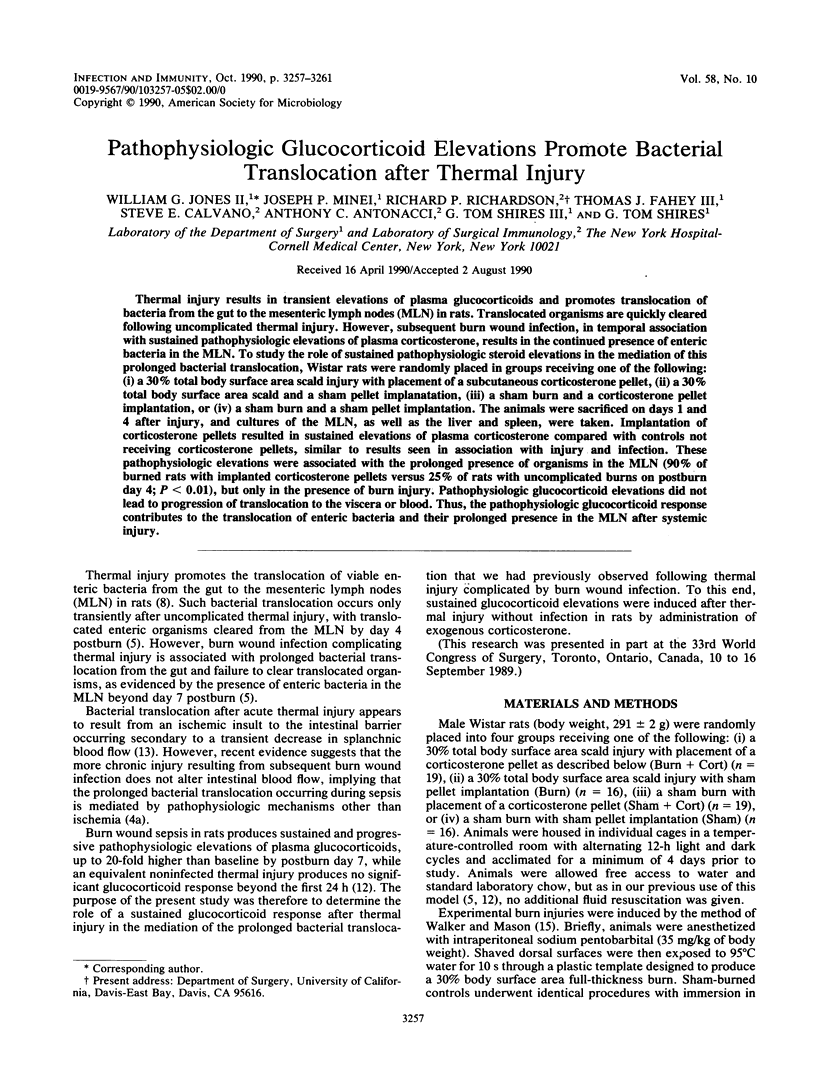
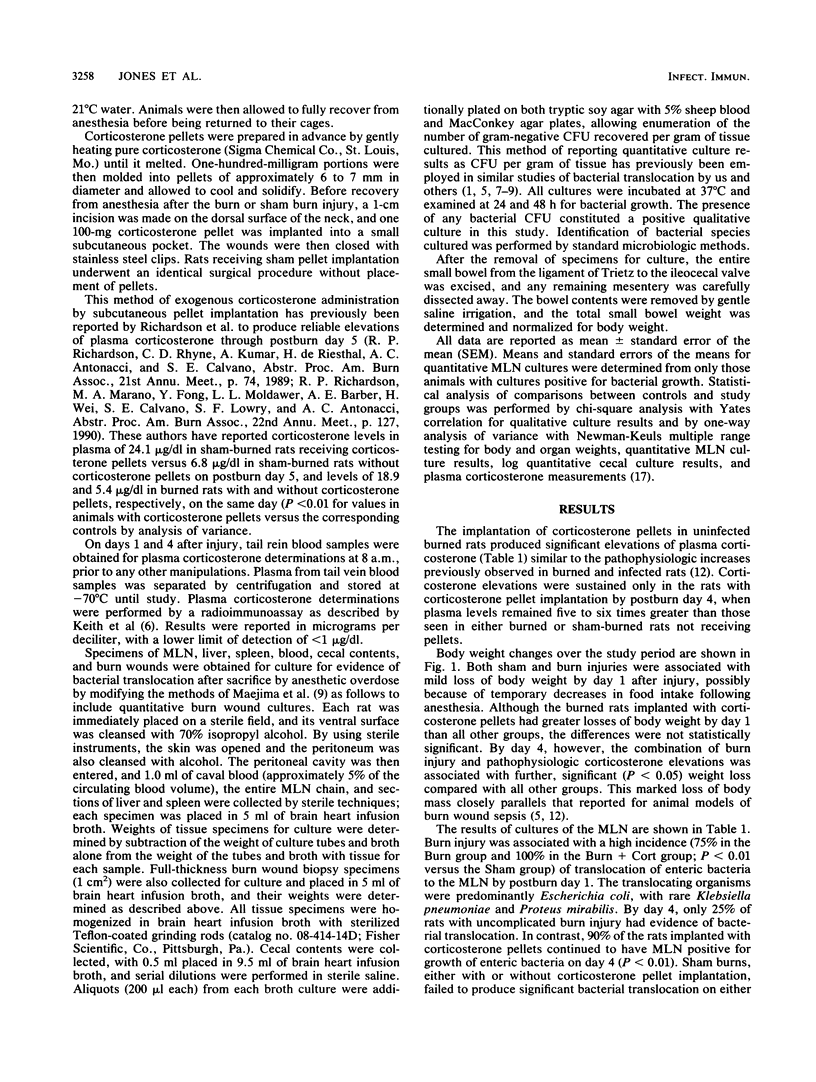
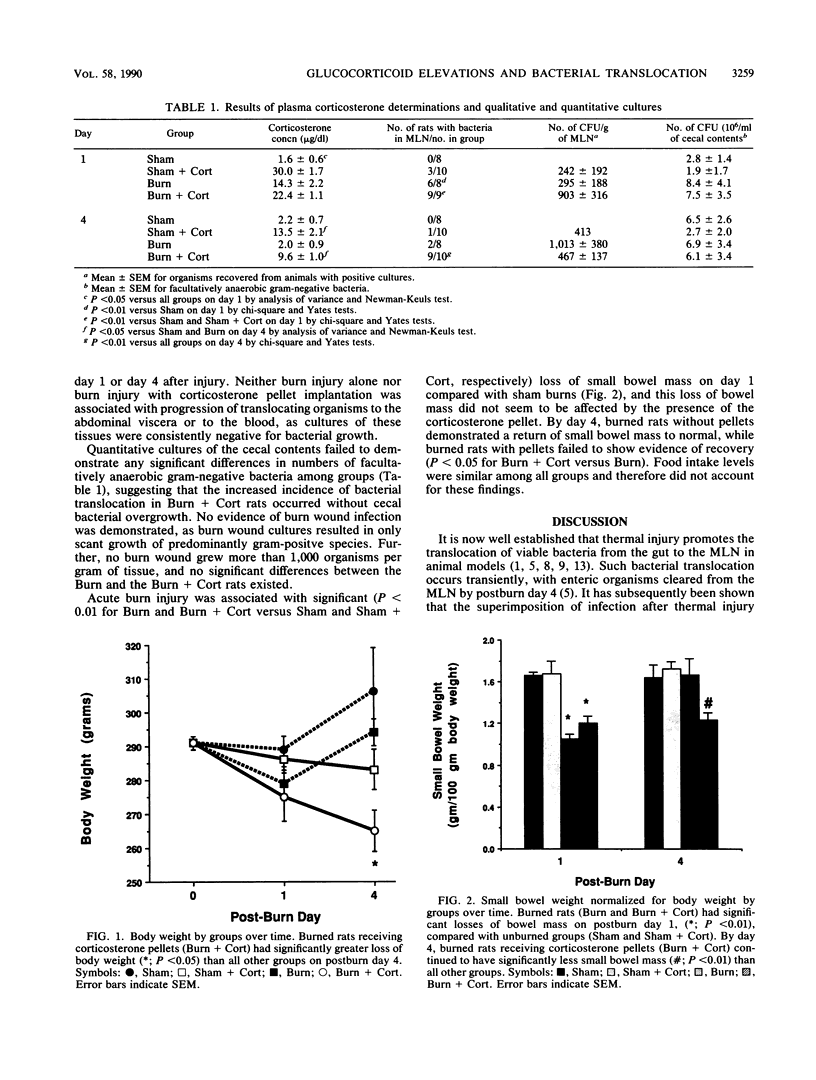
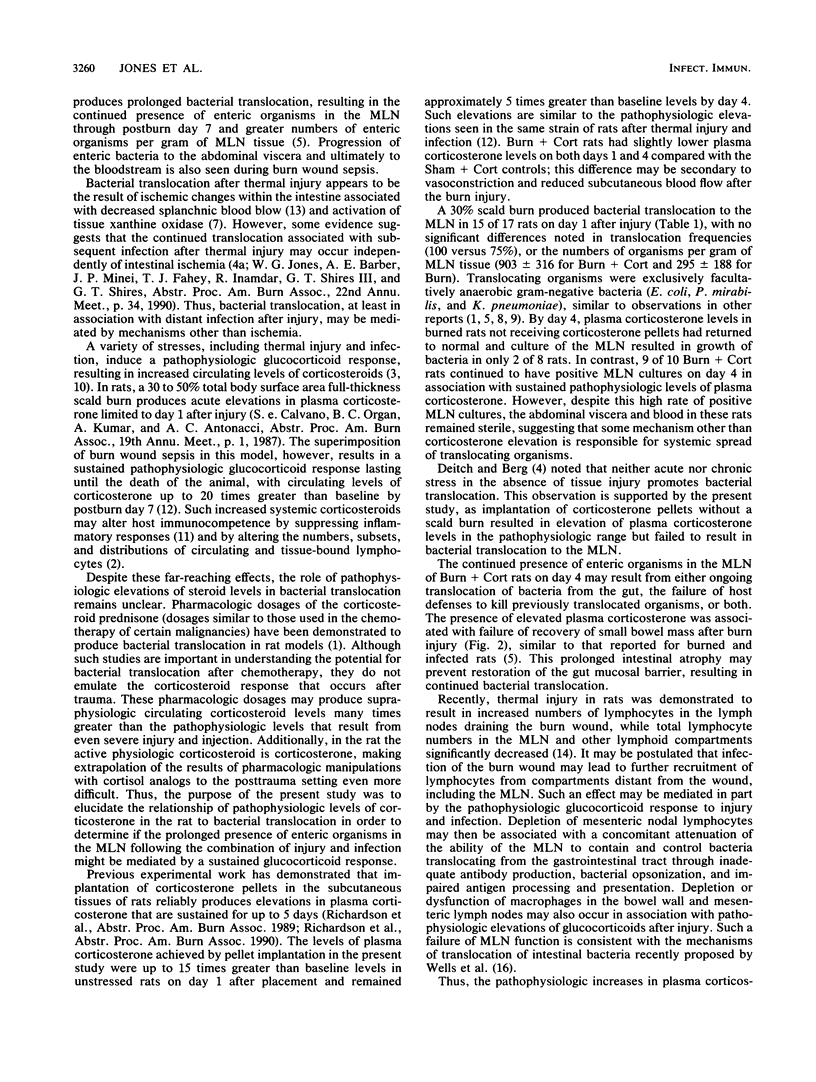
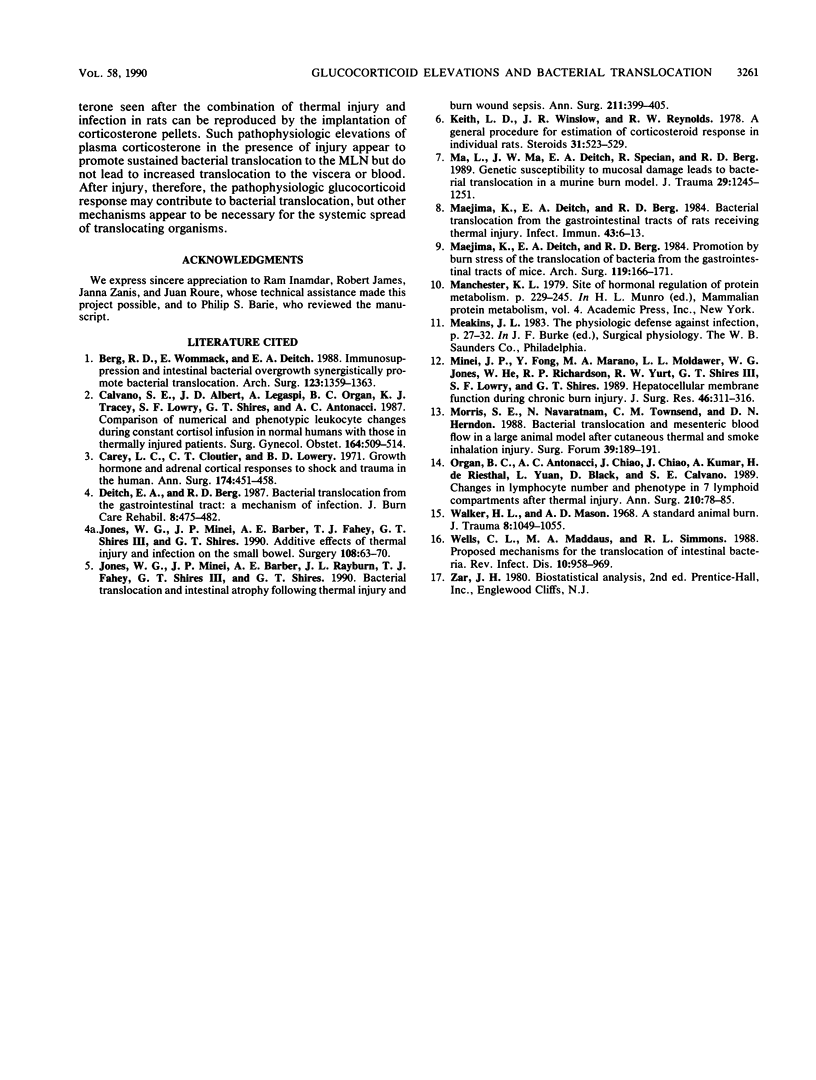
Selected References
These references are in PubMed. This may not be the complete list of references from this article.
- Berg R. D., Wommack E., Deitch E. A. Immunosuppression and intestinal bacterial overgrowth synergistically promote bacterial translocation. Arch Surg. 1988 Nov;123(11):1359–1364. doi: 10.1001/archsurg.1988.01400350073011. [DOI] [PubMed] [Google Scholar]
- Calvano S. E., Albert J. D., Legaspi A., Organ B. C., Tracey K. J., Lowry S. F., Shires G. T., Antonacci A. C. Comparison of numerical and phenotypic leukocyte changes during constant hydrocortisone infusion in normal humans with those in thermally injured patients. Surg Gynecol Obstet. 1987 Jun;164(6):509–520. [PubMed] [Google Scholar]
- Carey L. C., Cloutier C. T., Lowery B. D. Growth hormone and adrenal cortical response to shock and trauma in the human. Ann Surg. 1971 Sep;174(3):451–460. doi: 10.1097/00000658-197109000-00014. [DOI] [PMC free article] [PubMed] [Google Scholar]
- Deitch E. A., Berg R. Bacterial translocation from the gut: a mechanism of infection. J Burn Care Rehabil. 1987 Nov-Dec;8(6):475–482. [PubMed] [Google Scholar]
- Jones W. G., 2nd, Minei J. P., Barber A. E., Fahey T. J., Shires G. T., 3rd, Shires G. T. Additive effects of thermal injury and infection on the small bowel. Surgery. 1990 Jul;108(1):63–70. [PubMed] [Google Scholar]
- Jones W. G., 2nd, Minei J. P., Barber A. E., Rayburn J. L., Fahey T. J., 3rd, Shires G. T., 3rd, Shires G. T. Bacterial translocation and intestinal atrophy after thermal injury and burn wound sepsis. Ann Surg. 1990 Apr;211(4):399–405. doi: 10.1097/00000658-199004000-00004. [DOI] [PMC free article] [PubMed] [Google Scholar]
- Keith L. D., Winslow J. R., Reynolds R. W. A general procedure for estimation of corticosteroid response in individual rats. Steroids. 1978 Apr;31(4):523–531. doi: 10.1016/0039-128x(78)90034-x. [DOI] [PubMed] [Google Scholar]
- Ma L., Ma J. W., Deitch E. A., Specian R. D., Berg R. D. Genetic susceptibility to mucosal damage leads to bacterial translocation in a murine burn model. J Trauma. 1989 Sep;29(9):1245–1251. doi: 10.1097/00005373-198909000-00010. [DOI] [PubMed] [Google Scholar]
- Maejima K., Deitch E. A., Berg R. D. Bacterial translocation from the gastrointestinal tracts of rats receiving thermal injury. Infect Immun. 1984 Jan;43(1):6–10. doi: 10.1128/iai.43.1.6-10.1984. [DOI] [PMC free article] [PubMed] [Google Scholar]
- Maejima K., Deitch E., Berg R. Promotion by burn stress of the translocation of bacteria from the gastrointestinal tracts of mice. Arch Surg. 1984 Feb;119(2):166–172. doi: 10.1001/archsurg.1984.01390140032006. [DOI] [PubMed] [Google Scholar]
- Minei J. P., Fong Y., Marano M. A., Moldawer L. L., Jones W. G., Wei H., Richardson R. P., Yurt R. W., Shires G. T., 3rd, Lowry S. F. Hepatocellular membrane function during chronic burn injury. J Surg Res. 1989 Apr;46(4):311–316. doi: 10.1016/0022-4804(89)90193-5. [DOI] [PubMed] [Google Scholar]
- Organ B. C., Antonacci A. C., Chiao J., Chiao J., Kumar A., de Riesthal H. F., Yuan L., Black D., Calvano S. E. Changes in lymphocyte number and phenotype in seven lymphoid compartments after thermal injury. Ann Surg. 1989 Jul;210(1):78–89. doi: 10.1097/00000658-198907000-00012. [DOI] [PMC free article] [PubMed] [Google Scholar]
- Walker H. L., Mason A. D., Jr A standard animal burn. J Trauma. 1968 Nov;8(6):1049–1051. doi: 10.1097/00005373-196811000-00006. [DOI] [PubMed] [Google Scholar]
- Wells C. L., Maddaus M. A., Simmons R. L. Proposed mechanisms for the translocation of intestinal bacteria. Rev Infect Dis. 1988 Sep-Oct;10(5):958–979. doi: 10.1093/clinids/10.5.958. [DOI] [PubMed] [Google Scholar]


